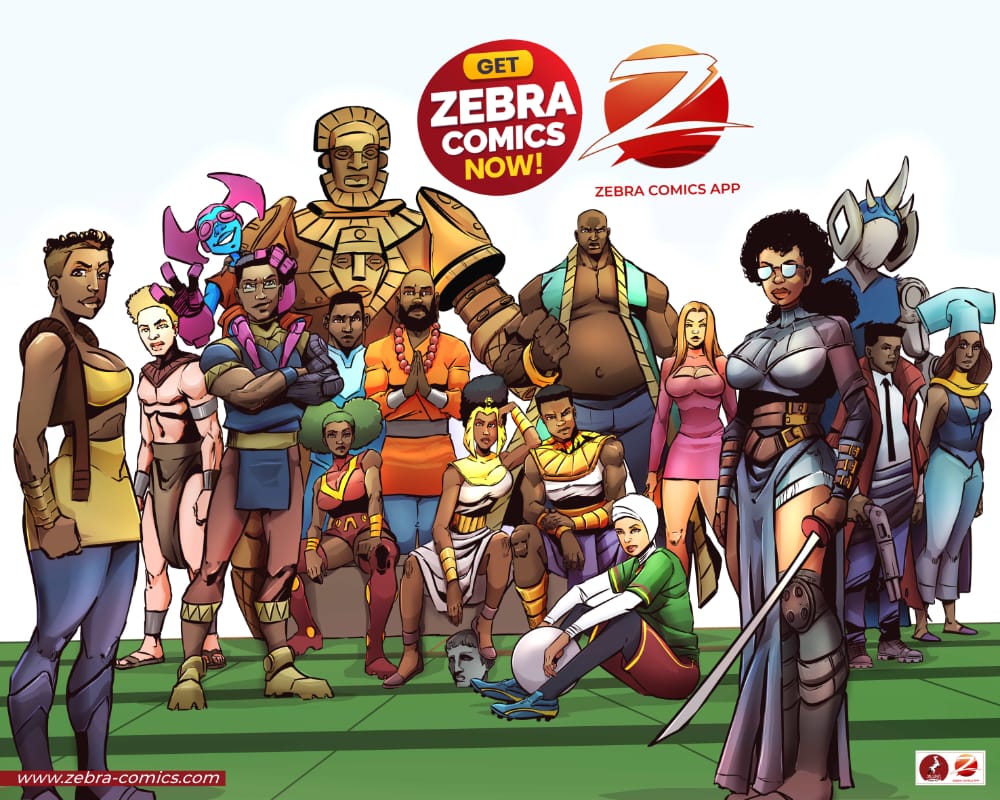The comic book industry is an ever-evolving landscape, and comic book illustration techniques are no exception. In recent years, several new trends have emerged in the comic book industry, including the widespread use of digital tools, a focus on digital publishing, the incorporation of 3D modelling, innovative techniques for inking and colouring, and a growing interest in African comics. The advent of all these innovations has contributed to reducing the time and effort required to produce comic books while maintaining the quality of the products. Here are a few trends that have emerged in recent years.
Digital Tools
One of the most significant trends in comic book illustration is the adoption of digital tools. While traditional tools like pencils, inks, and brushes were previously commonplace, digital tools such as tablets and software programs have gained popularity. Digital art allows comic book artists to create more dynamic and realistic illustrations. Digital tools offer numerous advantages, including the ability to produce highly detailed illustrations, experiment with different styles, and easily edit and adjust artwork. Artists can use digital art to craft intricate backgrounds, design complex characters, and create realistic special effects.
Another notable trend in comic book illustration is the integration of 3D modelling. This technique enables artists to develop three-dimensional characters and environments, which can be utilised in comic books. Additionally, 3D modelling facilitates the creation of realistic special effects, such as explosions and flying objects.
Alongside the use of digital tools and 3D modelling, comic book artists have explored innovative techniques for inking and colouring their illustrations. These new approaches have empowered artists to produce more expressive and visually captivating artwork.
Digital publishing
Digital publishing has emerged as a prominent distribution method for comic books and graphic novels. Readers can access digital comics on various devices, such as computers, tablets, and smartphones. Digital publishing offers several advantages, including the convenience of reading comics on any device, the ability to zoom in and out of pages, and the option to read comics in multiple languages. Furthermore, digital publishing is often a more affordable option for readers, as digital comics are typically priced lower than their physical counterparts.

Digital publishing presents numerous benefits for comic book creators, including the potential to reach a wider audience on a global scale, reduced costs compared to traditional print publishing, and greater control over the creative process. Creators who self-publish digitally can dictate the formatting, pricing, and distribution of their comics.
Despite its advantages, digital publishing also poses some challenges. The digital comic book market is highly competitive, making it challenging for new creators to stand out. Additionally, digital comics are more susceptible to piracy, and creators must navigate the constantly evolving technology used to read digital comics.
Overall, digital publishing is a growing market with a lot of potential for comic book creators.
African Comics
In recent years, African comics have experienced a notable surge in popularity. These comics often exhibit unique styles and perspectives, frequently addressing social, political and cultural issues. African comics have gained traction worldwide and are contributing to the promotion of African culture and perspectives.

The growing popularity of African comics can be attributed to several factors. Firstly, an increasing number of talented African comic book creators are bringing their unique perspectives to the medium, fostering a more diverse and inclusive comics industry. Secondly, the expanding African middle class has created a larger audience for comics, as disposable incomes increase and entertainment spending rises. Lastly, digital publishing has played a significant role in facilitating the publication of African comics, breaking down barriers to entry and enabling more creators to share their work with a global audience.
The growing trend of African comics is a positive development. These comics are helping promote African culture and perspectives. Through digital platforms such as Zebra Comics and Raptures, African authors and artists can showcase their work to the world. As the African comics industry continues to grow, it will be interesting to see how these comics continue to evolve and impact the world.
Independent Comics
Indie comics have experienced a surge in popularity in recent years, driven by creators exploring non-traditional publishing avenues outside of the dominant Marvel and DC publishers. Several factors have contributed to this trend, including the emergence of digital comics, the growing prevalence of crowdfunding, and the increased availability of resources for independent creators.
Digital comics have revolutionized the distribution of independent works, making it more accessible for creators to share their content. Platforms like Comixology and Image Comics have made online comic reading widely available, and the ubiquity of mobile devices has further facilitated on-the-go access to comics.

Crowdfunding has played a pivotal role in the rise of independent comics. Platforms such as Kickstarter and Indiegogo have empowered creators to secure funding directly from their fans, enabling the publication of many independent comics that would otherwise have been unfeasible.
Moreover, the expansion of resources available to independent creators has bolstered the trend. Numerous organizations and websites now provide invaluable guidance, support, and marketing assistance to independent creators, facilitating greater visibility for their work.
Consequently, independent comics have reached unprecedented levels of popularity, transcending their niche status to compete with major publishers for readership and attention. This trajectory is expected to persist as an increasing number of creators opt for the independent path, driving further growth in the coming years.
Conclusion
The comic book industry is in a constant state of evolution, and the trends discussed in this article represent just a few of the many factors shaping the future of comic book illustration. As technology advances and new perspectives continue to emerge, it will be fascinating to observe how these trends develop and influence the medium in the years to come.





How can I make use of Kickstarter?